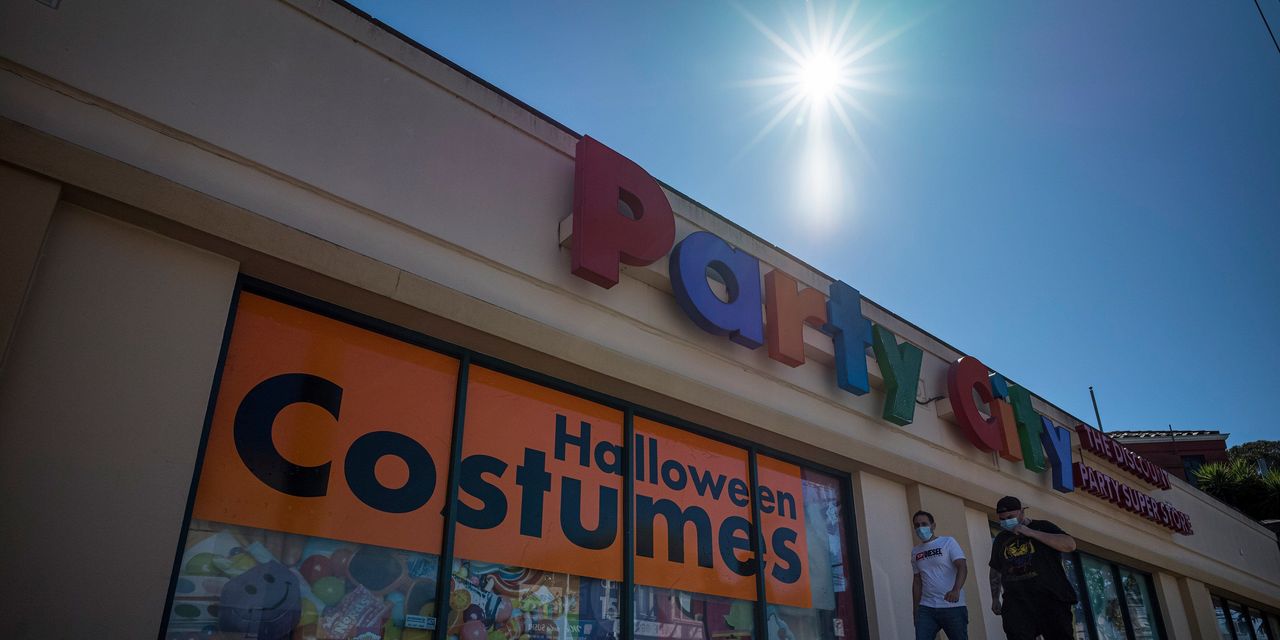Shock waves from the stock market’s declines are spreading into junk bonds, sending prices tumbling and forcing some companies to cancel new deals.
Average prices of US high-yield bonds fell to around 91 cents on the dollar Monday, the lowest level since May of 2020 when pandemic shutdowns slammed the global economy, according to data from Bloomberg.
The selloff has punished companies with below-investment-grade credit ratings and poor reported earnings. It is also making it harder and more expensive for some to raise new debt for capital investments, acquisitions and refinancings.
Bonds of Diebold Nixdorf Inc.,
DBD -4.60%
a producer of automated-teller machines, dropped 45% on Tuesday to about 40 cents on the dollar after the company reduced its 2022 financial forecasts, in part because of lost sales in Russia and Ukraine.
A Party City Holdco inc.
PRTY -4.55%
8.75% bond due 2026 has been one of the most actively traded junk bonds this week, falling 15% to about 74 cents on the dollar, according to data from MarketAxess. The drop followed the retail chain’s disclosure that gross profit margins fell 3.8 percentage points to 31.9% of net sales in the first quarter.
Frontier Communications Parent inc.
FYBR 1.16%
paid investors a yield of around 8.75% to issue $800 million of new bonds on Monday for the expansion of its fiber-optic network. The unexpectedly high interest rate attracted strong demand but sent the company’s existing 6% bonds due 2030 tumbling about 8% to 80 cents on the dollar, according to MarketAxess.
“It’s never a good sign when the new-issue market isn’t functioning well,” said Eric Hess, a high-yield portfolio manager at Newfleet Asset Management. “The last couple of days, the equity selloff has got people a little spooked.”
Buffeted by a broad bond-market route, high-yield bonds have lost about 10% this year, according to data from Bloomberg. Their yields, which rise when prices fall, are now around 7.5% compared with 4.3% at the start of January. Until recently, junk bonds had been relatively insulated from the sharp moves of stock indexes such as the S&P 500—which has lost over 17% so far this year—but the two markets are starting to trade more in tandem, investors say.
The extra yield investors demand to hold junk bonds over US Treasury bonds has jumped to 4.4 percentage points from 2.8 in January. That is still well below the recent 11-percentage-point high in March 2020.
“It feels like capitulation today,” Mike Scott, a high-yield portfolio manager at Man GLG said Monday.
Prices of junk bonds fell earlier this year as the Federal Reserve signaled it would raise interest rates quickly, prompting investors to demand higher yields to lend money. More recently, the losses have been fueled by concerns that inflation and tightening monetary policy will spark a recession. Operational headwinds in industries such as healthcare, cable, entertainment and technology have accelerated the downward momentum.
Hospital operator HCA Healthcare Inc.’s
HCAs -6.66%
bonds have been dragged down about 3% in recent days to 88 cents on the dollar because of concerns about rising labor costs and employee shortages, fund managers said.
The $3.3 billion bond issued by online used-car auctioneer Carvana Co.
CVNA -18.21%
two weeks ago has since plummeted, hitting buyers of the deal with a 9% loss. The company struggled to place the debt until alternative asset manager Apollo Global Management agreed to buy about half of it.
Others are pulling transactions from the market altogether.
Medical-product maker Bioventus inc.
VHL -4.95%
last week withdrew a $415 million bond with a low triple-C credit rating that was meant to pay for an acquisition. “Current market conditions are not conducive for an offering on terms that would be in the best interest of its stakeholders,” the company said then. A spokeswoman for Bioventus declined to comment.
SHARE YOUR THOUGHTS
How is market turbulence prompting you to adjust your portfolio? Join the conversation below.
Investors have pulled about $23 billion out of mutual and exchange-traded funds in the market since the start of February, according to data from Lipper Inc.
“There’s nobody coming in to buy,” said Jim Schaeffer, a portfolio manager at Aegon Asset Management. “Usually people think the Fed is going to step in and do something to help, and now the Fed is on the opposite side.”
Bargain hunters aren’t yet interested in junk debt because safer investment-grade bonds have also lost roughly the same amount, making them a better pick for now, portfolio managers said. Buying investment-grade bonds at a discount during the 2020 coronavirus selloff provided a lucrative trade for many high-yield investors.
The yield of a Bloomberg index of investment-grade bonds has risen to about 3.6% from 1.8% this year, while the average dollar price has fallen to about 93 cents on the dollar from 104. The spread of the bonds over Treasurys widened this year to 0.51 percentage point from 0.35 point.
“We’re seeing investors favor higher-quality segments of the credit market because they can meet their yield targets there without taking additional risk,” said Joe Lind, co-head of high-yield at Neuberger Berman Group LLC.
Write to Matt Wirz at matthieu.wirz@wsj.com
Copyright ©2022 Dow Jones & Company, Inc. All Rights Reserved. 87990cbe856818d5eddac44c7b1cdeb8
.
